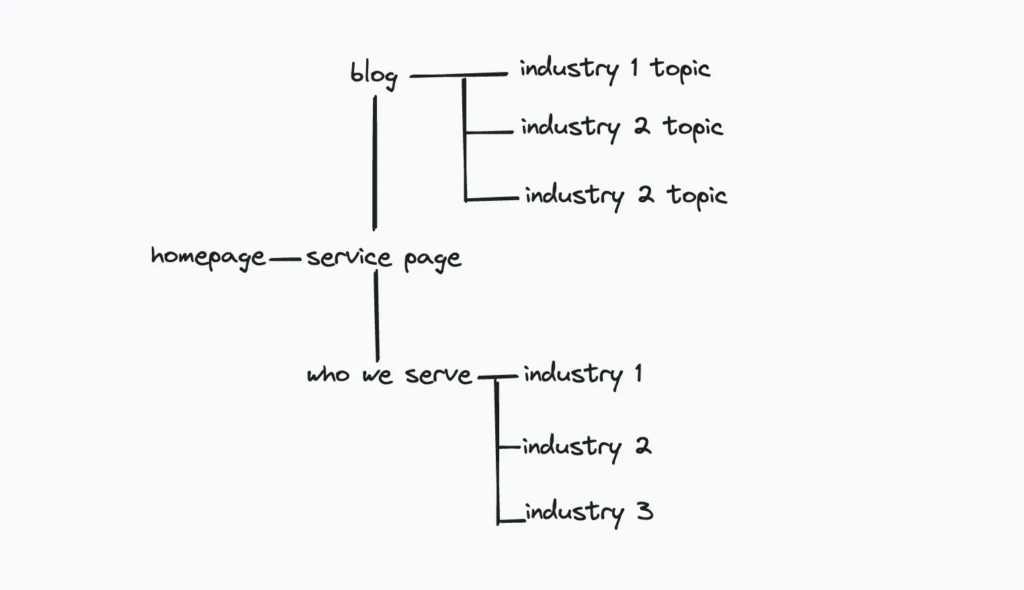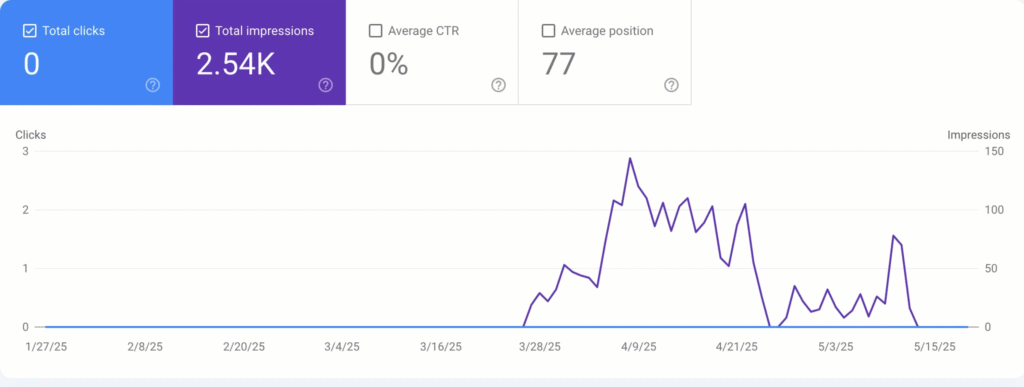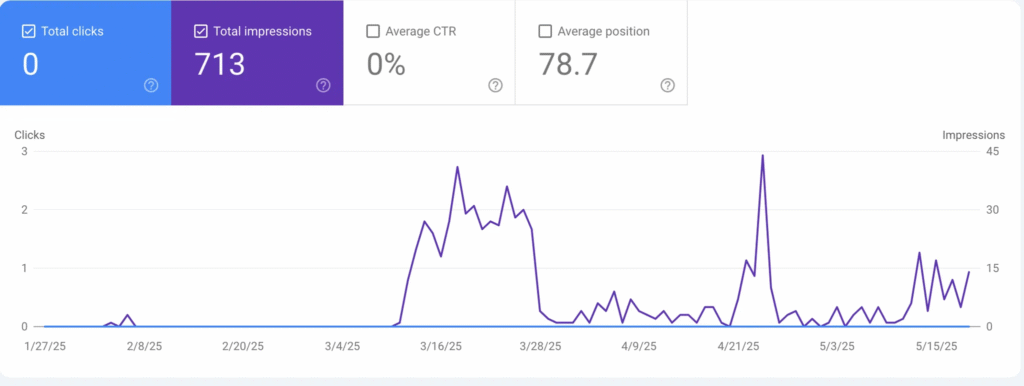Currently, we’re having trouble ranking with one of our client’s websites.
It’s getting the right impressions and showing an upward trend over time. Sounds good, right? Well, not quite.

We’ve been working on this website for 2 months, and all we’re getting are impressions.
All of the clicks are going through the homepage via brand-related searches.
None of the articles we’ve made are ranking right now.
So… what’s happening here?
Here’s what we’ve noticed:

This is the structure we’re working with.
Currently, the “Who We Serve” pages are cannibalizing our industry topics from the blog posts.
Here’s the traction we’ve gotten from our blog post on Industry 1:

And this is what we’re seeing from the Industry 1 section on the “Who We Serve” page:

Both of these pages are getting impressions from the same set of keywords.
Meaning, they’re cannibalizing each other — and that’s not a good thing. They’re both being held back from ranking because they talk about the same topic in the same way.
So… what do we do?
One solution we considered was to set the canonical tag to point to the blog post. But why the blog, you ask?
The blog gets better traffic and is more informative. Ideally, we want to satisfy user queries by serving the page that has the most content-focused discussion — and in this case, that would be the article.
But we realized that wouldn’t work long-term.
So now what?
Simple: we change the context of the “Who We Serve” pages.
Instead of repeating the same information-based content around the same keywords, we’ll shift those pages to target sales-related queries — so we can clearly separate the purpose of each page.
So rather than having the “Who We Serve” pages talk about informational content, we’ll instead highlight the features and product benefits that relate to the industry and to the client’s service.
That’s the direction we’re going now.
When we first came into this project, our task was just to create content to help the site gain better topical authority.
Two months in, and we’re getting results — but can we do better?
Definitely.
By changing the context of these “Who We Serve” pages, we aim to reduce confusion — so when Google crawls the site again, it’ll understand which page is meant to rank for what.
This not only helps avoid cannibalization, but also improves the navigation and UX between an informational blog post and a sales-focused product page.
After we rework the content, we’re also planning to refine the internal links. Providing clarity on how and where to insert links to both the blog and product pages needs to be addressed — so we can guide users more intentionally through the site.
